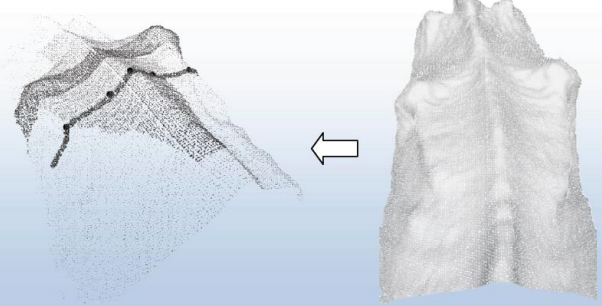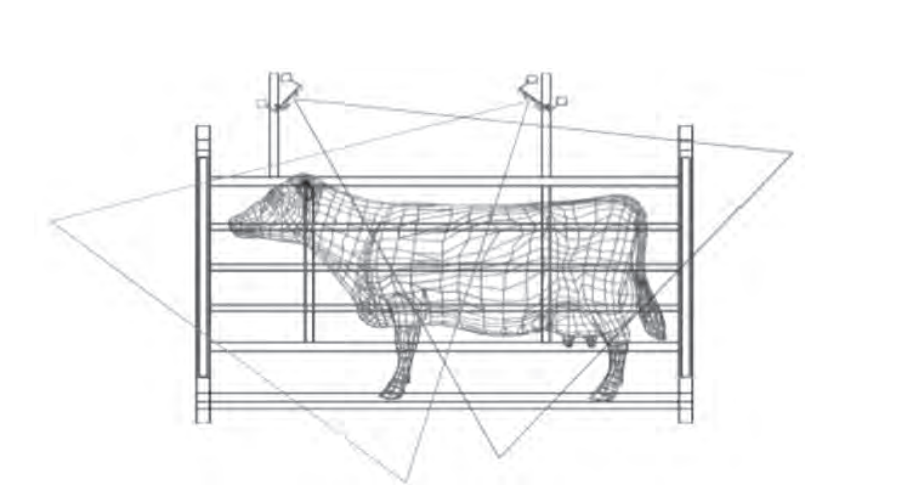Body condition scoring (BCS) is a vital aspect of today’s farming, ensuring cows are meeting correct weight targets and getting sufficient energy levels.
However, many consider the traditional method of BCS – checking by hand the fat cover over the loin, plates, and pin bones of the pelvis and tail areas – to be time-consuming, labour intensive, and subjective (leading to variable results).
As technology becomes a prominent tool in dairy farming, we are now experiencing the use of automated BCS systems.
The systems have become a common topic of study for intensive units, working through the use of 3D sensors and a camera, which estimate BCS to a fine degree of accuracy.
These systems are going a long way towards not only reducing labour, but also removing subjectivity and allowing for higher precession diets, therefore boosting fertility and production.
Digital BCS
Automated BCS systems use cameras and sensors, taking hundreds of pictures per second as the cow walks past, from which they create a 3D image of an animal’s back.
Each animal is identified by their electric identification tag (EID) and, based on their breed and the pictures, a fat score is assessed of the roundness of her back.
The digital censor ranks on the same scale as traditional BCS, with score going from from 1 to 5, in increments of 0.25.
1 is considered extremely thin, while 5 is considered extremely fat. However, animals generally have specific targets for different stages of their lives/lactation.
The system is typically fixed to the drafting gate or exit race, where cows can be scanned daily to ensure optimum herd health.
Through the automated system, farmers are able to adapt diets to suit individual cows, maximising production levels and fertility while reducing risks such as ketosis and milk fever in transition periods as well as further metabolic issues.
Any early onsets of diseases such as this will be flagged by the system as it follows daily trends in comparison to the lactation curve, allowing farmers to treat animals promptly.
However, 3D imaging has not being widely adopted by farmers across Ireland due to high cost of cameras as well as high yearly maintenance costs.
There has being some implementation of 2D image-based BCS systems, but these do not have the same depth as 3D, therefore limiting the accuracy of the scoring.
Others feel the capital cost is justifiable, with optimal nutrition helping to prevent the risk of high cost situations such as grass tetany, pregnancy loss, and metritis.
Traditional scoring
As stated earlier, traditional method is when a farmer checks the cow by hand, assessing the fat cover over the loin, plates, and pin bones of the pelvis and tail areas.
A lot of farmers score their animals using their eyes only. However, this can easily lead to inaccurate scores, which will not be adjusted correctly and can lead to complications.
Lactation stage
Cows
Pre-calving
3.25 ( between 3.0 and 3.5)
Pre-breeding
3.0 (between 2.75 and 3.25).
Drying off
2.75
The five scores are assigned by fat assessment: for score 1, there will be no fat around areas such as the tail head while the hip bones and ribs will be visually prominent.
Score 2 cows will have some tissue cover around the tail head and over the hip bones, while their individual ribs will no longer be as obvious.
Cows given a score of 3 will have a nice fat cover either side of the tail head, with pressure being needed to feel below it.
Score 4 will be similar, however, the fat cover around the tail head will be more obvious as the cows rounds become soft to touch and folds of fat begin to develop over the ribs.
Blocky animals will get a score of 5 as their tail head and hip bones are almost completely buried in fat, while folds of fat are apparent over the ribs.



